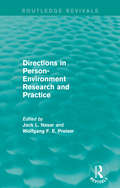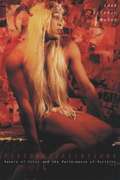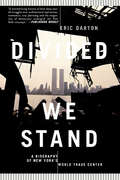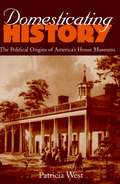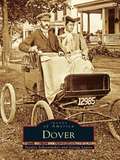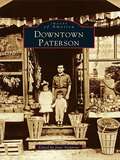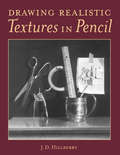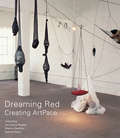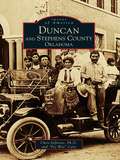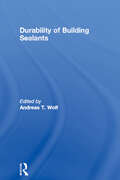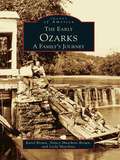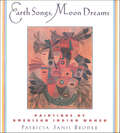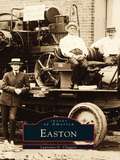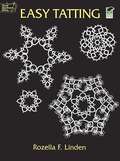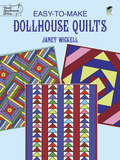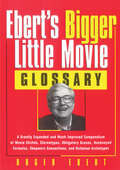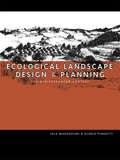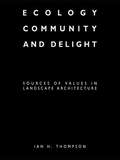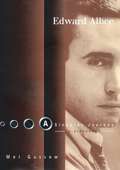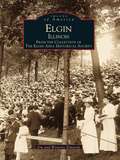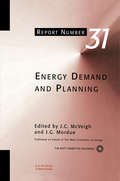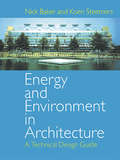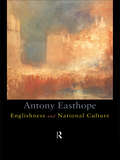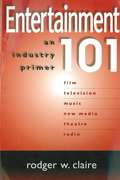- Table View
- List View
Directions in Person-Environment Research and Practice (Routledge Revivals)
by Wolfgang F.E. Preiser Jack L. NasarFirst published in 1999, this book presents a fresh and diverse set of perspectives representing key directions of research and practice in the field of environmental design research. Leading researchers in various areas of person-environment research, such as privacy, children’s environment, post-occupancy evaluation, environmental cognition, environmental aesthetics, crime prevention, housing and environmental protection and environmental design present what they consider their best work. The book argues for the value of a multi-disciplinary and interdisciplinary approach to problem-solving and outlines many important directions for methods, research and practice.
Disidentifications: Queers of Color And The Performance of Politics (Cultural Studies of the Americas #2)
by José Esteban MuñozThere is more to identity than identifying with one&’s culture or standing solidly against it. José Esteban Muñoz looks at how those outside the racial and sexual mainstream negotiate majority culture—not by aligning themselves with or against exclusionary works but rather by transforming these works for their own cultural purposes. Muñoz calls this process &“disidentification,&” and through a study of its workings, he develops a new perspective on minority performance, survival, and activism.Disidentifications is also something of a performance in its own right, an attempt to fashion a queer world by working on, with, and against dominant ideology. By examining the process of identification in the work of filmmakers, performance artists, ethnographers, Cuban choteo, forms of gay male mass culture (such as pornography), museums, art photography, camp and drag, and television, Muñoz persistently points to the intersecting and short-circuiting of identities and desires that result from misalignments with the cultural and ideological mainstream in contemporary urban America.Muñoz calls attention to the world-making properties found in performances by queers of color—in Carmelita Tropicana&’s &“Camp/Choteo&” style politics, Marga Gomez&’s performances of queer childhood, Vaginal Creme Davis&’s &“Terrorist Drag,&” Isaac Julien&’s critical melancholia, Jean-Michel Basquiat&’s disidentification with Andy Warhol and pop art, Felix Gonzalez-Torres&’s performances of &“disidentity,&” and the political performance of Pedro Zamora, a person with AIDS, within the otherwise artificial environment of the MTV serialThe Real World.
Divided We Stand: A Biography of New York's World Trade Center
by Eric DartonWhen the World Trade Towers in New York City were erected at the Hudson’s edge, they led the way to a real estate boom that was truly astonishing. Divided We Stand reveals the coming together and eruption of four volatile elements: super-tall buildings, financial speculation, globalization, and terrorism. The Trade Center serves as a potent symbol of the disastrous consequences of undemocratic planning and development. This book is a history of that skyscraping ambition and the impact it had on New York and international life. It is a portrait of a building complex that lives at the convergence point of social and economic realities central not only to New York City but to all industrial cities and suburbs. A meticulously researched historical account based on primary documents, Divided We Stand is a contemporary indictment of the prevailing urban order in the spirit of Jane Jacobs’s mid-century classic The Death and Life of Great American Cities.
Domesticating History: The Political Origins of America's House Museums
by Patricia WestCelebrating the lives of famous men and women, historic house museums showcase restored rooms and period furnishings, and portray in detail their former occupants' daily lives. But behind the gilded molding and curtain brocade lie the largely unknown, politically charged stories of how the homes were first established as museums. Focusing on George Washington's Mount Vernon, Louisa May Alcott's Orchard House, Thomas Jefferson's Monticello, and the Booker T. Washington National Monument, Patricia West shows how historic houses reflect less the lives and times of their famous inhabitants than the political pressures of the eras during which they were transformed into museums.
Dover
by George Laurie Stanley SchoonmakerWhen Dover was settled in 1722, the only inhabitants of this northern New Jersey wilderness were Native Americans. The early iron forges along the mighty Rockaway River were soon developed, followed by the Morris Canal; it was, however, the coming of the railroad in 1848 that truly transformed the small village. Two hundred and seventy-five years later, Dover is still evolving. In Dover, the town's colorful and diverse past is chronicled through over 200 vintage, many neverbefore-seen photographs, including images of the historic Morris Canal, the majestic churches, theaters, schools, factories, and downtown businesses. See how Blackwell Street looked 100 years ago, and look at sights long gone, such as the Dover speedway, the trolleys, and early automobiles. Most importantly, see the faces of Dover's people, both past and present, that have enriched and molded its past.
Downtown Paterson
by June AvignoneIt was a corporate experiment--an experiment that would later be known as Paterson, New Jersey. Home of the Great Falls, Paterson holds the distinction of being the first planned industrial center of the United States. The land of the Lenape and a few Dutch settlers would be forever changed when politicians and wealthy investors founded Paterson as a corporation, as opposed to chartering it as a city, in 1792. At a crucial turning point in our young, agrarian-based nation, the struggles and triumphs of individuals from diverse ethnic groups would be set into historic motion. Over 100 photographs of Paterson's rich past and complicated present have been woven together with text from noted historians and poets, focusing on the downtown historic area. Downtown Paterson takes us on a journey from the beginnings of the proverbial SilkCity through its radical labor past and days of pre-mall grandeur with a thriving Main Street abundant with elegant stores, vaudeville houses, and movie theaters. This volume ends with a probing look at the city's present-day people and places.
Drawing Realistic Textures in Pencil
by J. D. HillberryYou won't believe the incredible drawings you can create using common pencils and the special techniques illustrated in this book. These methods are so easy that anyone--from doodler to advanced artist--can master them in minutes! Step by step, you'll learn how to capture the look of metal, glass, weathered wood, skin, hair and other textures. Two detailed start-to-finish demonstrations show you how to use these textures to create drawings that look so real they seem to leap right off the page.
Dreaming Red
by Jan Jarboe Russell Kathryn Kanjo Eleanor Heartney Linda PaceSince its founding in 1993 by the late Pace Foods heiress Linda Pace, Artpace has become one of the premiere foundations for contemporary art. An artist residency program based in San Antonio, Texas, Artpace's goal is to give artists time and space in which to imagine new ways to work. Each year, nine artists (three from Texas, three from other areas of the United States and three from abroad) are invited to the foundation to create new work. Selected by guest curators the likes of Robert Storr and Okwui Enwezor, the list of artists who have undertaken residencies at ArtPace is impressive, prescient and diverse, including Felix Gonzalez-Torres, Annette Messager, Tracey Moffatt, Xu Bing, Nancy Rubins, Cornelia Parker, Inigo Manglano-Ovalle, Glenn Ligon, Kendell Geers, Carolee Schneemann, Mona Hatoum, Isaac Julien, Arturo Herrera, and Christian Jankowski.Dreaming Red includes illustrations of all the works created at ArtPace since its inception, an essay by art historian Eleanor Heartney, short essays on selected artists by the guest curators, including Cuauhtémoc Medina, Lynne Cooke, Chrissie Iles and Judith Russi Kirshner, and a lengthy essay on the personal history of the foundation and its founder.
Dreaming Red Creating ArtPace
by Jan Jarboe Russell Kathryn Kanjo Eleanor Heartney Linda PaceSince its founding in 1993 by the late Pace Foods heiress Linda Pace, Artpace has become one of the premiere foundations for contemporary art. An artist residency program based in San Antonio, Texas, Artpace's goal is to give artists time and space in which to imagine new ways to work. Each year, nine artists (three from Texas, three from other areas of the United States and three from abroad) are invited to the foundation to create new work. Selected by guest curators the likes of Robert Storr and Okwui Enwezor, the list of artists who have undertaken residencies at ArtPace is impressive, prescient and diverse, including Felix Gonzalez-Torres, Annette Messager, Tracey Moffatt, Xu Bing, Nancy Rubins, Cornelia Parker, Inigo Manglano-Ovalle, Glenn Ligon, Kendell Geers, Carolee Schneemann, Mona Hatoum, Isaac Julien, Arturo Herrera, and Christian Jankowski. Dreaming Red includes illustrations of all the works created at ArtPace since its inception, an essay by art historian Eleanor Heartney, short essays on selected artists by the guest curators, including Cuauhtémoc Medina, Lynne Cooke, Chrissie Iles and Judith Russi Kirshner, and a lengthy essay on the personal history of the foundation and its founder.
Duncan and Stephens County, Oklahoma
by Chris Jefferies Pee Wee" CaryIncluding some of Oklahoma's earliest and most productive oil fields, Duncan and Stephens County played a major role in the development of America's oil industry. Through historic images, this book focuses on the two themes that emerge from the area's past: first, the settlement, growth, and development of communities with strong, progressive pioneer heritage; and second, the discovery of oil in the late teens, and the development of a petroleum industry with a worldwide reach and impact.Using primarily the archives of the Stephens County Historical Museum, the authors selected photographs that illustrate the two themes of community and oil, and how they impact each other. Highlights include the growth and development of Duncan, Marlow, and Comanche; prosperity from the oil boom; the strongsense of community through the Depression; service in both World War I and World War II; renewed growth following World War II; and contemporary efforts to strengthen the communities.
Durability of Building Sealants: 4th Volume
by A. T. WolfThis volume contains the proceedings of the Second International Symposium on Durability of Building Sealants, held under the joint auspices of the British Building Research Establishment Ltd (BRE) and the International Union of Testing and Research Laboratories for Buildings and Structures (RILEM) Technical Committee 139-DBS. The twelve contributions in this volume reflect the wide spectrum of current research and provide for the development of an International Standard on Sealant Durability.
Early Ozarks, The: A Family's Journey
by Nancy Mashino Brown Karol Brown Leola MashinoDomino Danzero's journey, which began in Italy in 1890, led him penniless to New York. The young immigrant came to the Midwest and found work in the coal mines of Illinois and the restaurants of Chicago. Through his travels and his work he gained employment with the Frisco railroad, where he became the overseer of Harvey Houses and Frisco dining cars throughout the central United States. Photography was his hobby and he was commissioned to take photographs for the Frisco railroad. The turn-of-the-century photographs featured in The Early Ozarks: A Family's Journey portray the humanness of people living in the Ozarks. They provide a glimpse of thebetter things in life--food, family, and friends--reflecting fundamental human compassion and the way of living at the early part of the twentieth century.
Earth Songs, Moon Dreams: Paintings by American Indian Women
by Patricia Janis BroderEarth Songs, Moon Dreams: Paintings by American Indian Women is a celebration of the contributions of Native American women to America's cultural heritage. Focusing on both traditional and modern art and offering an historical and stylistic overview, Broder's book includes the work of Native American women belonging to more than forty tribes across the United States and Canada. Earth Songs, Moon Dreams features historically important works by pioneer artists of the early twentieth century, classic examples of the Indian-School tradition, examples of the first successful attempts to interpret the techniques of modernism as compatible with the symbols and stylistic conventions of traditional Indian art, and examples of the work of the most innovative and accomplished Native American women painting today. Includes over 100 gorgeous, full color reproductions. Broder has prepared an introduction on each artist and then presents one or two samples of her work.
Easton (Images of America)
by Laurence G. ClaggettIn the early part of the 18th century, Talbot County on Maryland's Eastern Shore was restructured in size and boundary, requiring the designation of a new county seat. Groups from the Wye River to Oxford competed vigorously to have their town win the honor. But the selection committee, with manifestpartiality, decided upon the geographical center of the new county: a remote field cultivated and thenabandoned by its native residents. Here was born thetown that would eventually be known as Easton. Telling the story of the original Talbot CourtHouse, the market, early schools, churches, andbusinesses, this fascinating visual history documentsan era of significant change for the town in the early 20th century. Improved roads and transportationallowed the widespread population of the county to come to town; friends and family members could meetmore often, and a sense of community identity began to grow.
Easy Tatting
by Rozella Florence LindenThis clearly written, lavishly illustrated guide to the age-old art of lace-making allows even novices to fill a treasure chest with lovely tatted designs.Veteran tatting instructor Rozella Linden has included clear, step-by-step instructions that will help you create simple rings and picots for such projects as earrings, a small sunflower, and an ice crystal as well as chains for flower pins, a small rosette, a lacy square, and a snowflake ornament -- among other designs. Advanced tatters will find directions for completing elegant projects that include a tatted necklace (which can also be used as edging), an oval doily, a fancy snowflake, and a delicate table mat.Over 65 drawings and photos enhance this collection of easy-to-do but very attractive patterns that will not only inspire and delight anyone interested in this intriguingly beautiful craft but also enable even beginning tatters to create treasured possessions of exquisite handmade lace.
Easy-to-Make Dollhouse Quilts
by Janet WickellAdd the perfect "Home, Sweet Home" touch to your dollhouse with these easy-to-make miniature quilts. This expert guide offers step-by-step instructions for foundation piecing, a machine-sewing technique widely used in the late nineteenth century and revived by today's busy quiltmakers. With foundation piecing, you don't need to handle tiny patches of fabric, so creating your 1"-scale masterpiece is remarkably easy.Ten gorgeous patterns appear here: Watercolor Weaves (a variation of the ever-popular Log Cabin pattern), Southwestern Skies, Midnight Stars, Springtime T's, and six others. Blocks range from 1" to 1 1/4" square. Helpful layouts will assist you in determining color values and placement.Even beginners can follow these simple instructions, and experienced quilters will savor the opportunity to try some lovely variations in a miniature format.
Ebert's Bigger Little Movie Glossary: A Greatly Expanded and Much Improved Compendium of Movie Clichés, Stereotypes, Obligatory Scenes, Hackneyed Formulas, ... Conventions, and Outdated Archetypes
by Roger EbertAn expanded glossary of movie clichés from the Pulitzer Prize–winning film critic. The popular film critic offers a compilation of witty and wise observations about the film lexicon, including “Fruit Cart,” a chase scene through an ethnic or foreign locale, or “The Non-Answering Pet,” referring to a dead pet in a horror movie.
Ecological Landscape Design and Planning
by Gloria Pungetti Jala MakhzoumiBased on both research and practical experience,Ecological Landscape Design and Planning offers a holistic methodological approach to landscape design and planning. It focuses on the scarcity of natural resources in the Mediterranean and the need to aim for long-term ecological stability and environmental sustainability. The principles of this approach, therefore, can be used as a theoretical foundation for holistic landscape research, creative ecological design and better sustainable practice development.
Ecology, Community and Delight: An Inquiry into Values in Landscape Architecture
by Ian ThompsonThis book examines the three principal value systems which influence landscape architectural practice: the aesthetic, the social and the environmental, and seeks to discover the role that the profession should be playing now and for the future. The book integrates an investigation of historical sources with contemporary research into the beliefs and values of practitioners. The book raises questions such as: should landscape architecture aspire to the status of an art form? What is the relationship between aesthetics and ecology? Does landscape architecture have a social mission?
Edward Albee: A Biography
by Mel GussowIn 1960, Edward Albee electrified the theater world with the American premiere of The Zoo Story, and followed it two years later with his extraordinary first Broadway play, Who's Afraid of Virginia Woolf? Proclaimed as the playwright of his generation, he went on to win three Pulitzer Prizes for his searing and innovative plays. Mel Gussow, author, critic, and cultural writer for The New York Times, has known Albee and followed his career since its inception, and in this fascinating biography he creates a compelling firsthand portrait of a complex genius.The book describes Albee's life as the adopted child of rich, unloving parents and covers the highs and lows of his career. A core myth of Albee's life, perpetuated by the playwright, is that The Zoo Story was his first play, written as a thirtieth birthday present to himself. As Gussow relates, Albee has been writing since adolescence, and through close analysis the author traces the genesis of Who's Afraid of Virginia Woolf?, Tiny Alice, A Delicate Balance, and other plays. After his early triumphs, Albee endured years of critical neglect and public disfavor. Overcoming artistic and personal difficulties, he returned in 1994 with Three Tall Women. In this prizewinning play he came to terms with the towering figure of his mother, the woman who dominated so much of his early life.With frankness and critical acumen, and drawing on extensive conversations with the playwright, Gussow offers fresh insights into Albee's life. At the same time he provides vivid portraits of Albee's relationships with the people who have been closest to him, including William Flanagan (his first mentor), Thornton Wilder, Richard Barr, John Steinbeck, Alan Schneider, John Gielgud, and his leading ladies, Uta Hagen, Colleen Dewhurst, Irene Worth, Myra Carter, Elaine Stritch, Marian Seldes, and Maggie Smith. And then there are, most famously, Elizabeth Taylor and Richard Burton, who starred in Mike Nichols's acclaimed film version of Who's Afraid of Virginia Woolf? The book places Albee in context as a playwright who inspired writers as diverse as John Guare and Sam Shepard, and as a teacher and champion of human rights.Edward Albee: A Singular Journey is rich with colorful details about this uniquely American life. It also contains previously unpublished photographs and letters from and to Albee. It is the essential book about one of the major artists of the American theater.
Elgin, Illinois: From the Collection of the Elgin Area Historical Society
by Jim Edwards Wynette EdwardsElgin was named by a city founder, James T. Gifford, after his favorite hymn. The city shares its name with 20 cities in 15 states and 8 countries. Elgin is situated on the banks of the Fox River, 35 milesnorthwest of Chicago, the city with which Elgin had thriving business exchanges in agricultural and industrial goods. The city's world-wide fame, for the most part, has come from its watch factory and Mr. Gail Borden's milk company. Pianos, shoes, books, and even chewing gum were also manufactured in Elgin and sold internationally. This exciting new study of a major Midwestern city is chock-full of images, many of which have never before been published. Featured in Elgin, Illinois is information about the Elgin National Watch Company, early circus and carnival attractions, as well as rip-roaring national road races. Highlighted in one chapter is Elgin's part in helping to win World War Iat home, complete with original photographs from the front in Europe. This lively and historical look at Elgin from the 1800s to the 1930s is interwoven with national and international trends and events.
Energy Demand and Planning
by J. C. McVeigh J. G. MordueEnergy, Demand and Planning brings together a group of distinguished authors from many relevant disciplines, under the auspices of the Watt Committee on Energy. The authors were asked to consider the effects of policy decisions that might be taken now on the planning of the world energy industries in the coming half-century or so. Discussion is hel
Energy and Environment in Architecture: A Technical Design Guide
by Nick Baker Koen SteemersA unique and revolutionary text which explains the principles behind the LT Method (2.1), a manual design tool developed in Cambridge by the BRE. The LT Method is a unique way of estimating the combined energy usage of lighting, heating, cooling and ventilation systems, to enable the designer to make comparisons between options at an early, strategic stage.In addition,Energy and Environment in Architecture the book deals with other environmental issues such as noise, thermal comfort and natural ventilation design. A variety of case studies provide a critique of real buildings and highlight good practice. These topics include thermal comfort, noise and natural ventilation.
Englishness and National Culture
by Antony EasthorpeIn this highly engaging book, Antony Easthope examines 'Englishness' as a form and a series of shared discourses. Discussing the subject of 'nation' - a growing area in literary and cultural studies - Easthope offers polemical arguments written in a lively and accessible style. Englishness and National Culture asserts a profound and unacknowledged continuity between the seventeenth century and today. It argues that contemporary journalists, historians, novelists, poets and comedians continue to speak through the voice of a long-standing empiricist tradition.
Entertainment 101
by Rodger W. Claire Jeffrey HirschEntertainment 101 provides an overview of the rapidly changing entertainment industry: Who does what, how, when and why in the making and marketing of America's most influential and profitable export. A street-smart primer, this book demystifies and explains the terminology and inner workings of the entire industry, covering motion pictures, television, theatre, music and new media. This up-to-the-minute manual is an essential desktop reference for students and entertainment business veterans alike, or indeed anyone fascinated by an industry that intrigues most of us and has a profound effect on our society. To simplify things, we have divided the far-flung and variegated entertainment industry into its six principle businesses: film, television, music, new media, theater and radio. To help understand how a project is actually created and to identify the players in each medium, we have listed the typical cast and crew credits from a film, a television show, a record album, a stage play, an on-line magazine and a radio show. We have described in detail the jobs of each artist and artisan and what they contribute.
